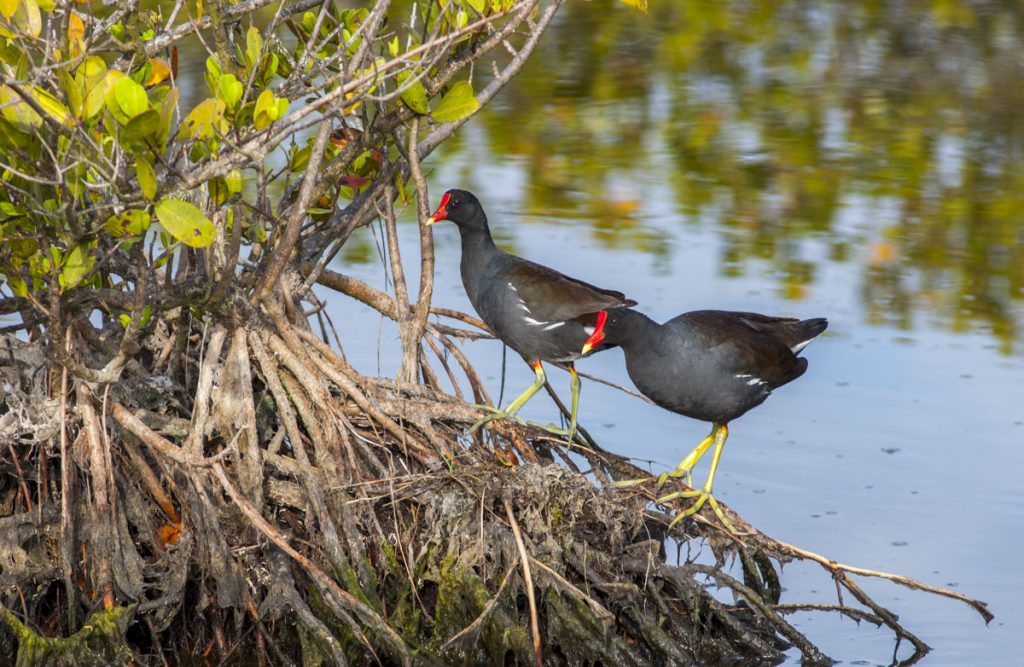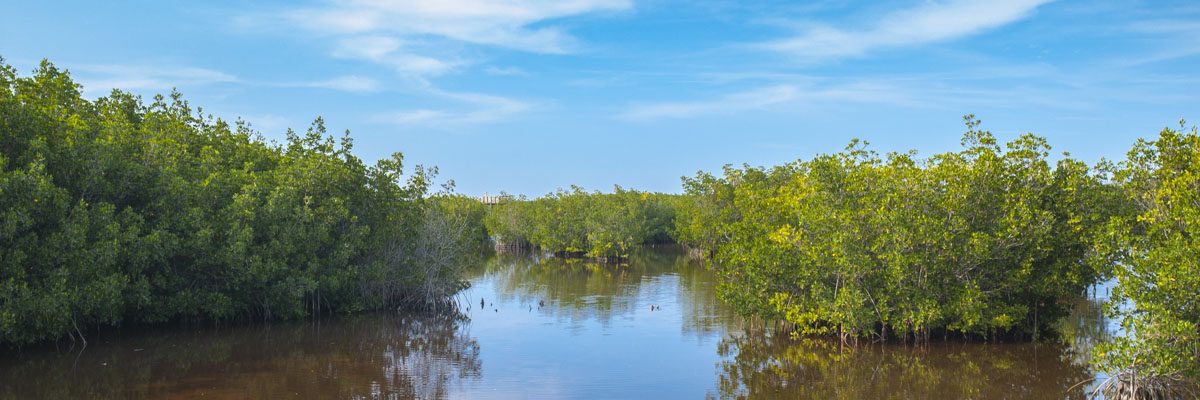Watershed
- The lagoon watershed covers 2,284 square miles and the lagoon’s waters span 353 square miles.
- Five counties border the lagoon; however, portions of seven counties are within the watershed.
- Five inlets connect the lagoon with the Atlantic Ocean. However, the inlet at Port Canaveral has locks that separate the port basin from the lagoon, limiting the exchange of waters.
Not a river
The lagoon is 156-mile-long estuary where salt water from the Atlantic Ocean mixes with freshwater from the land and tributaries. The resulting brackish (slightly salty) water is moved more by the wind than by the tide and does not flow from headwaters to a mouth like a river. The width of the lagoon varies from one-half mile to five miles, with an average depth of four feet.
Three sections
The Indian River Lagoon is comprised of three lagoons:
- Mosquito Lagoon (from Ponce de Leon Inlet to the north end of Merritt Island)
- Banana River (an offshoot of the Indian River on Merritt Island’s eastern shore)
- Indian River (the main body of water, extending from northern Brevard County to the southern boundary of Martin County)
Supporting the economy
The lagoon is responsible for one-seventh of the region’s economy. The overall, annual economic value of the lagoon was estimated at $7.4 billion in 2016.
Fisheries
The lagoon is the cradle of the ocean, serving as a spawning and nursery ground for many fish. Lagoon fisheries generate an estimated $30 million in revenues annually and the lagoon provides approximately 50 percent of annual fish harvest along the east coast of Florida.
Highway of the East Coast
The lagoon is located along the Atlantic Flyway, a key biological highway for many migrating birds.

Wildlife
- The lagoon basin contains a large number of species relative to other estuaries in North America, with:
- 685 fish species
- 370 bird species
- 2,100 plant species
- 2,200 animal species
- Ocean beaches in the lagoon region attract some of the highest numbers of nesting sea turtles in the western hemisphere.
- The lagoon is the only location in the world where the Atlantic salt marsh snake is found.
Plant life
- The northern Indian River Lagoon is part of a broad transitional zone where mangrove-dominated wetlands and maritime hammocks give way to herbaceous salt marsh.
- The lagoon contains 27 percent of eastern Florida’s coastal salt marshes.


